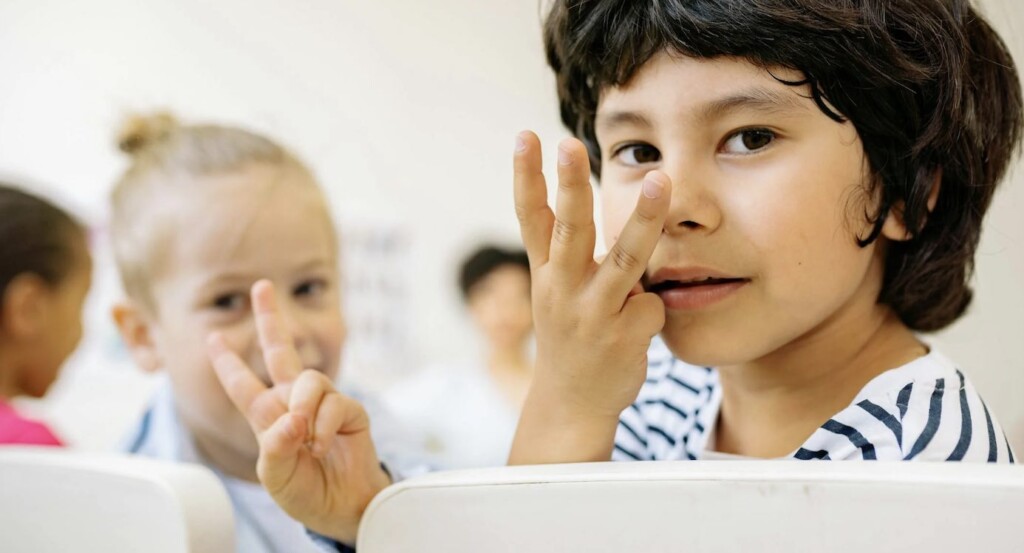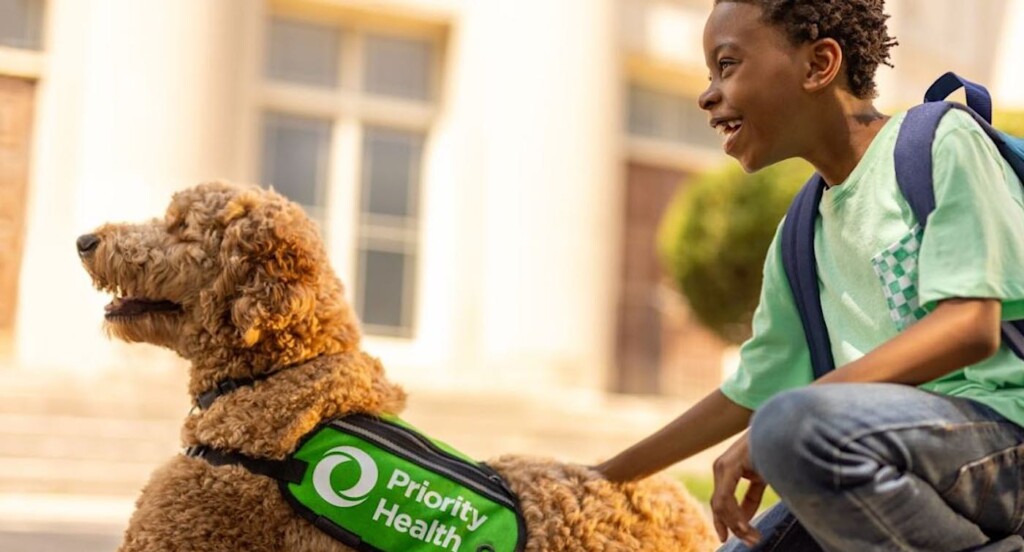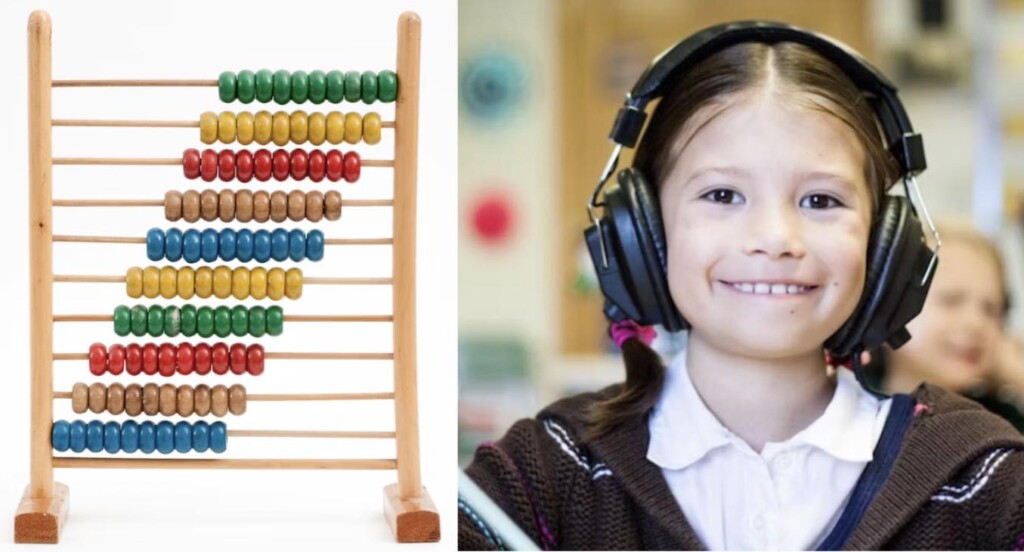 Courtesy of Oliver Chu family
Courtesy of Oliver Chu familyBoy with Rare Genetic Disorder Amazes Doctors After World-First Gene Therapy
 Courtesy of Oliver Chu family
Courtesy of Oliver Chu familyCounting on Fingers Really Helps Kids Improve Their Math Skills–By 40% New Study Shows

Dads show gender biases, in both brain responses and behaviors, toward toddlers
No activity for hours during childhood may cause heart damage in later life: Study

Hey dad, your health affects your baby’s well-being too
As a society, we put a significant emphasis on women’s healthF both immediately prior to and during pregnancy – and rightly so. A woman needs to prepare her body for the arduous nine months of gestation ahead to give the growing baby the best possible start to life.
A pregnant woman is likely to take supplements and maintain a healthy diet free of alcohol and cigarettes while protecting herself from unnecessary environmental toxin exposure. In comparison, men’s health prior to conception is relatively insignificant right? Wrong!
Enter father
Our research shows that male diet prior to conception – particularly a fast-food-based diet – can be significantly detrimental to pregnancy success. Using an animal model of diet-induced obesity, we compared pregnancy outcomes when fathers were either normal weight or obese.
We found that rates of pregnancy were significantly lower when the father was obese because embryos generated with sperm from obese males weren’t very good and failed to implant into the mother’s uterus.
When obese fathers were able to achieve a pregnancy, the resulting foetus and placenta were both smaller than normal and the foetus was developmentally delayed. As the theory of the developmental origins of health and disease suggests, these small-for-gestational-age foetuses are at a higher risk of disease in later life, including cardiovascular disease, type 2 diabetes and high blood pressure.
This is of particular concern given the rising rates of global obesity.
Smoking fathers
And bad diet isn’t the only vice of modern man that can affect not only his fertility but also the health of his offspring. Almost 20% of Australian adult males smoke despite its well-publicised health risks. Studies from China, Australia and Europe have identified an approximately 30% increase in the rate of childhood cancers when fathers smoke prior to conception.
In particular, the rate of leukaemia, lymphoma and brain tumours were up to 80% higher in children under the age of five when fathers had smoked prior to conception, even though mothers were non-smokers. And the rate of childhood cancer was highest when fathers smoked more cigarettes per day, had been smoking for a longer time, and started smoking before the age of 20.
What’s more, passive smoke exposure of mothers around the time of conception – likely due to fathers’ smoking – is associated with a significantly higher incidence of serious congenital heart defects in infants.
Alcohol harms
The effect of fathers’ alcohol consumption on offspring health is harder to define because of conflicting reports. It’s been suggested that a father’s alcohol consumption prior to conception results in a significant reduction in foetal birth weight, but this is yet to be conclusively proven and is subject to a number of confounding factors.
Animal models have shown fathers’ alcohol consumption to be associated with increased malformations, growth retardation, and behavioural anomalies in offspring, although alcohol exposure in these cases is reasonably high. So any adverse effects of paternal preconception alcohol exposure may be more subtle than this.
The dangers of work
While the effects of paternal diet, smoking, and alcohol consumption on offspring health can be mitigated with appropriate lifestyle changes before starting a family, occupational toxin exposure is harder to avoid.
And several paternal occupations such as office jobs and law enforcement were associated with significantly reduced rates of foetal birth defects. But avoiding occupational exposure to reproductive toxicants when planning to start a family is another question altogether. As a society, we really need to know what is bad for sperm.
Passing it on
Damage or changes to the male germ line, the sperm, is how paternal lifestyle and occupation end up having a detrimental effect on foetal development and offspring health. Sperm are particularly vulnerable to oxidative stress, which can damage DNA. And both a high-fat diet and smoking have been associated with increasing levels of oxidative stress.
Fathers’ health prior to conception is clearly just as important as mothers’, and when thinking of starting a family both mum and dad need to be as healthy as possible.![]()
David Gardner, Head of the Department of Zoology, The University of Melbourne; Natalie Binder, PhD student, The University of Melbourne, and Natalie Hannan, NHMRC Early Career Research Fellow, The University of Melbourne
This article is republished from The Conversation under a Creative Commons license. Read the original article.
Avoiding long exposure to severe temperatures vital to save kids' developing brain: Experts

Dogs Placed in Elementary Schools Making a Big Difference in Academics and Mental Health for Michigan Students
 Priority Pups
Priority Pups

Curious Kids: What happens when you flush a toilet on a plane?
What happens when you flush a toilet on a plane? –Lily, aged 6, Harcourt
Lily this is a great question! It doesn’t work like your toilet at home, which uses gravity to remove waste from our toilets into the sewer system. An aeroplane toilet uses a vacuum system along with a blue chemical that cleans and removes odours every time you flush.
A smelly tank
The waste and blue cleaning fluid ends up in a storage tank under the floor, in the very back of the cargo hold of the aeroplane. With so many people on the plane using the toilets, you can imagine how big the storage tank is!
The system is designed very much like the vacuum cleaners we use around the house to remove dirt and dust from our floors. This dirt and dust ends up in a container that we empty into a garbage bin. Similarly, the aeroplane’s toilets need the vacuum pressure system to move all the waste from the toilet into the plumbing pipe that connects the toilet to the storage tank, and finally into the tank.
There is a valve on the storage tank that opens when a toilet is flushed and closes when the toilet is not in use – to prevent odours from leaving the tank. This helps to keep the smell down from so many people using the toilet during a flight. The blue chemical helps to keep the smell down as well.
Where does it go once the plane lands?
A special truck comes to the aircraft after it lands and connects a hose to remove the waste and blue cleaning chemical into a storage tank on the truck. The truck plugs a hose into the airplane’s waste tank valve and removes all of the waste into the tank on the back of the truck.
The truck then takes the waste to a special area at the airport reserved for the waste from all aeroplanes, and the toilet waste is emptied into the sewer system for that airport. The training to operate the truck takes three days.
It has also been reported that sometimes, particularly on older planes, the valve where the waste truck connects to the aeroplane can leak a small amount of the waste and blue chemical. This turns to ice as the temperature at normal cruising altitude of 30,000 feet is normally around -56°C and the chemical turns to “blue ice”. This blue ice remains attached to the plane as long as the temperature remains below freezing.
Once the aeroplane begins to descend to land at the destination airport, the blue ice begins to thaw and may even fall off. There have been several occasions reported in the news where people have witnessed this flying poo!
In case you were wondering, the captain of the plane doesn’t have a button to release the waste from the storage tank while the plane is flying. Any waste that might leak out of the plane would be totally accidental.
Some people do think aeroplane contrails (the white lines planes sometimes leave in the sky) are either a special mind-control chemical or toilet waste. This is not true! What you are actually seeing are water vapours coming from the engine becoming ice crystals – like a thin cloud in the sky.![]()
Doug Drury, Professor/Head of Aviation, CQUniversity Australia
This article is republished from The Conversation under a Creative Commons license. Read the original article.
Curious Kids: what came first, the chicken or the egg?
Hi Grace!
Thanks for this great question. It’s an age-old dilemma that has left many people scratching their heads.
From an evolutionary perspective, both answers could be considered true! It all depends on how you interpret the question.
The case for the egg
When the first vertebrates – that is, the first animals with backbones – came out of the sea to live on land, they faced a challenge.
Their eggs, similar to those of modern fish, were covered only in a thin layer called a membrane. The eggs would quickly dry up and die when exposed to air. Some animals such as amphibians (the group that includes frogs and axolotls) solved this problem by simply laying their eggs in water – but this limited how far inland they could travel.
It was the early reptiles that evolved a key solution to this problem: an egg with a protective outer shell. The first egg shells would have been soft and leathery like the eggs of a snake or a sea turtle. Hard-shelled eggs, such as those of birds, likely appeared much later.
Some of the oldest known hard-shelled eggs appear in the fossil record during the Early Jurassic period, roughly 195 million years ago. Dinosaurs laid these eggs, although reptiles such as crocodiles were also producing hard-shelled eggs during the Jurassic.
As we know now, it was a line of dinosaurs that eventually gave rise to the many species of birds we see today, including the chicken.
Chickens belong to an order of birds known as the Galliformes, which includes other ground-dwelling birds such as turkeys, pheasants, peafowl and quails.
Specifically, chickens are part of a galliform genus called Gallus, which is thought to have started changing into its modern species between 6 million and 4 million years ago in South-East Asia. Domestic chickens only began appearing some time within the past 10,000 years.
This means hard-shelled eggs like the ones chickens lay are older than chickens themselves by almost 200 million years. So problem solved, right?
Well, it’s a matter of perspective.
The case for the chicken
If we interpret the question as referring specifically to chicken eggs – and not all eggs – the answer is very different. Unlike most species of animals, the modern chicken didn’t evolve naturally through evolution. Rather, it’s the result of domestication: a process where humans selectively breed animals to create individuals that are more tame and have more desirable traits.
The most famous example is the domestication of wolves into dogs by humans. Wolves and dogs have almost entirely the same DNA, but are very different in how they look and behave. Dogs came from wolves, and so scientists consider dogs to be a subspecies of wolf.
Similarly, chickens came from a species called the red junglefowl, which is found across Southern and South-East Asia. Researchers think red junglefowl were first drawn to humans thousands of years ago, when people started farming rice and other cereal grains.
This closeness then allowed domestication to take place. Over many generations the descendants of these tamed birds became their own subspecies.
Technically, the first chicken would have hatched from the egg of a selectively bred junglefowl. It was only when this chicken matured and started reproducing that the first true chicken eggs were laid.
So which answer is the better one?
That’s completely up to you to decide. As is the case with many dilemmas, the whole point of the question is to make you think – not necessarily to come up with the perfect answer.
In this case, evolutionary biology allows us to make an argument for both sides – and that is one of the wonderful things about science.![]()
Ellen K. Mather, Adjunct Associate Lecturer in Palaeontology, Flinders University
This article is republished from The Conversation under a Creative Commons license. Read the original article.
Children Do Much Better in Math When Music is Added to the Lesson: New Study
 Photos by Crissy Jarvis (left) and Ben Mullins
Photos by Crissy Jarvis (left) and Ben MullinsWhy Should You Breastfeed Your Baby?
- Providing all necessary nutrients for the baby’s healthy physical development, including vitamin D, iron, and zinc
- Preventing infections and serious health conditions, both during infancy and later in life
- Reducing a mother’s risk of conditions such as cancer, type 2 diabetes, and high blood pressure
Mothers with depression take longer to respond to their child

Kids develop self-esteem even before age five
Shhh! Your baby learning in sleep too

Chinese toddler first in the world to have 3D printed skull
Beijing: A three-year-old girl in China has become the first person in the world to have her skull reconstructed with the help of 3D printing technology, after a 17-hour-long ground-breaking surgery. The girl was suffering from a medical condition called hydrocephalus, which causes a buildup of excess cerebrospinal fluid in the brain. The condition left her with a head weighing about 20 kg, while she herself weighs only 32 kg. Doctors said she is recovering steadily after the 3D-printed titanium alloy skull was implanted, becoming the first person to have her cranium successfully reconstructed by by 3D printers. Han Han underwent the 17-hour surgery on Wednesday at the Second People's Hospital of central China's Hunan Province and is under observation, said neurosurgeon Kuang Weiping, who is in charge of her treatment. Han was admitted to the hospital two months ago. Since September last year, she has become bedridden as her head grew four times the normal size, taking up more than half of her total weight, Xinhua news agency reported. Due to the heavy weight, parts of her brain suffered serious infections and she lost sight because her optic nerve was affected. Kuang said they believed her skull was likely to rupture as infected parts became thinner and only the "brain-shrinking" operation could save her life. During the process, neurosurgeons peeled her scalp and skull, then drained the fluid in her head. After the swollen structures in her brain returned to the normal size, they implanted the donated artificial skull and covered it with her scalp. — PTI. Source: Article
The first baby born from a womb transplant
Infants Learn More Than We Might Think
The "water nymph" of the Yucatan Peninsula

Golden Eagle tries to snatch kid in Montreal



sq mi). They are monogamous and may remain together for several years or possibly for life. Most breeding activities take place in the spring, though can be more aseasonal in the warmer parts of the range, occasionally with mating and egg-laying taking place as early as November or December. Golden Eagles nest in high places mainly cliffs but also trees, or, rarely, human structures such as telephone poles. They build large nests to which they may return for several breeding years. Females lay from one to four eggs, typically two, and then primarily incubate them for 40 to 45 days, with occasional shifts by the males who otherwise attain food for the female and the young. Typically, one or two young survive to fledge in about three months. Full independence is usually attained for juvenile Golden Eagles in the fall, after which they wander widely until establishing a territory for themselves in four to five years, Open Images In New Browser To Find Its Source Of Sharing, Courtesy: http://en.wikipedia.org, https://www.youtube.com








